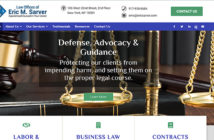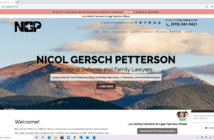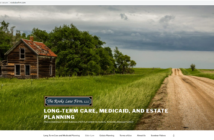LinkedIn, YouTube, an innovative web app, frequent speaking gigs, and in-house marketers have quickly grown this progressive firm to 16 people.
In just six years, Michael Liner has grown his disability law practice from a solo operation in his former employer’s attic in Cleveland to a four-attorney firm with a dozen support staff covering all of northeastern Ohio. He gives a lot of credit for his thriving practice to the Liner Legal app, custom-designed from an off-the-shelf template, downloadable to a smartphone or a tablet.
It allows Liner Legal’s clients to paperlessly complete and electronically sign forms, update their files as needed, and keep posted on the progress of cases. It includes shortcuts to instructional videos about the disability application process, blog posts, and other content on Liner Legal’s website. It also gives addresses of Social Security offices, and links to an array of social services, from food stamps to Medicaid, that many of the firm’s clients need. All of that and more—the Liner Legal Toolkit, as Liner calls it–is at their fingertips around the clock, which is what he had in mind when he decided to get an app.
“My goal was to make us a 24/7 law firm,” he explains. “I saw that we were getting a lot of voice mails from clients at 2 and 3 in the morning on Saturdays and Sundays, and I realized that my clients have questions for me all the time. They want to be able to tell me about doctor’s visits, or hospitalizations, or other changes in their lives that they think are important in their case, and it’s probably frustrating when they’re talking to a voicemail. They want to know that the information they’re giving is going directly to where it needs to go. They don’t necessarily want a call back.” Buttons on the app make all of that a snap.
“We have a lot of clients who are intimidated to even pick up the phone and so they have delayed giving us information,” Liner adds. “The ability to offer them multiple ways to provide us information has really been a blessing to those clients.”
The app has given his firm, in turn, something Liner says every business needs: a unique selling proposition. “The one thing that I cannot easily do until I’m done with the case is put money in your pocket, which is what you hired me to do,” he says. A distinguishing feature of Liner Legal, endearing the firm to its clients, is that with the app and its toolkit, “I can help fill other gaps in your life until then,” he says.
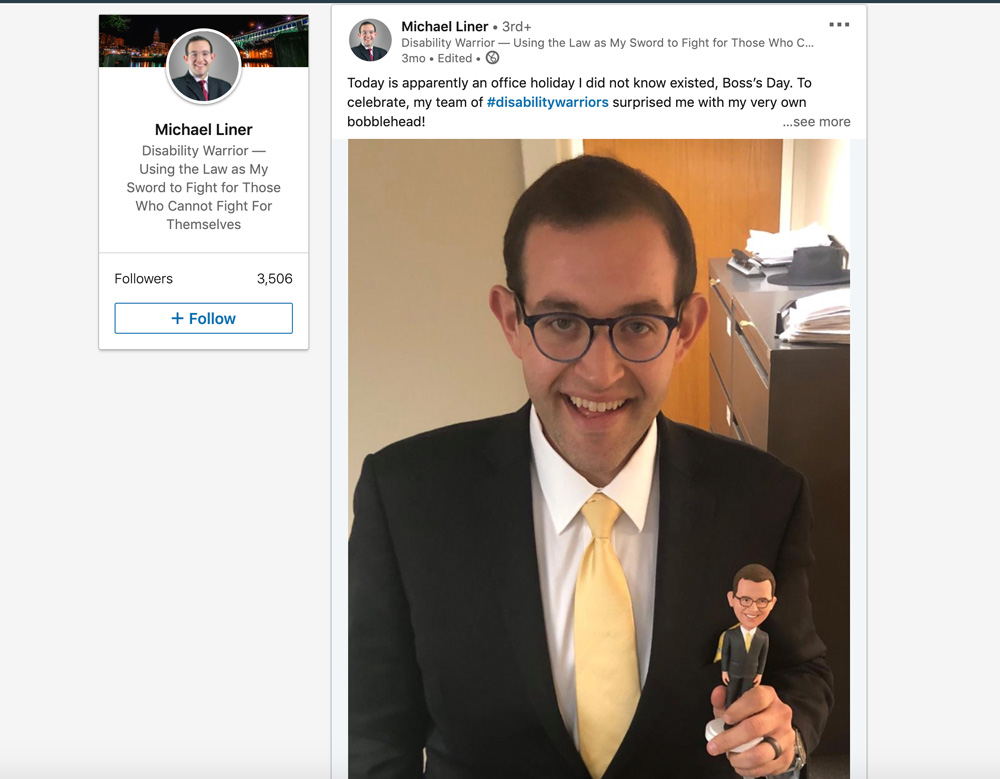
Generating Buzz About the App
Liner Legal rolled out the app in 2017, and generated lots of buzz about it a year later by using it as a platform for a 12-week weight-loss and wellness program. Inspired by his own recent loss of over 150 pounds, Liner first thought of offering it to his staff. But mindful from their daily work about how disabling obesity could be, they decided to open it to anyone who cared to sign up through the app, calling it the Liner Legal Largest Loser program.
Participants received an email each Monday with a meal plan for the week, exercise videos, links to community resources, motivational messages and chances to win weekly prizes, all the while tracking their own accumulating weight loss. “A lot of our clients are immobile so we decided to incorporate exercises that you can do from a couch. They can’t afford to shop at Whole Foods so we were providing recipes that you could make on a food-stamp budget,” Liner says. “It was important to us to make it realistic for the circumstances that our clients face.”
Many clients got their friends and family to join in. Community organizations that Liner has worked with helped spread the word. In the end, about 600 people were actively engaging with the program. “Not only did we get hundreds and hundreds of participants who collectively lost thousands of pounds, we changed people’s lives,” says Liner, who adds that the program will definitely be offered again soon.
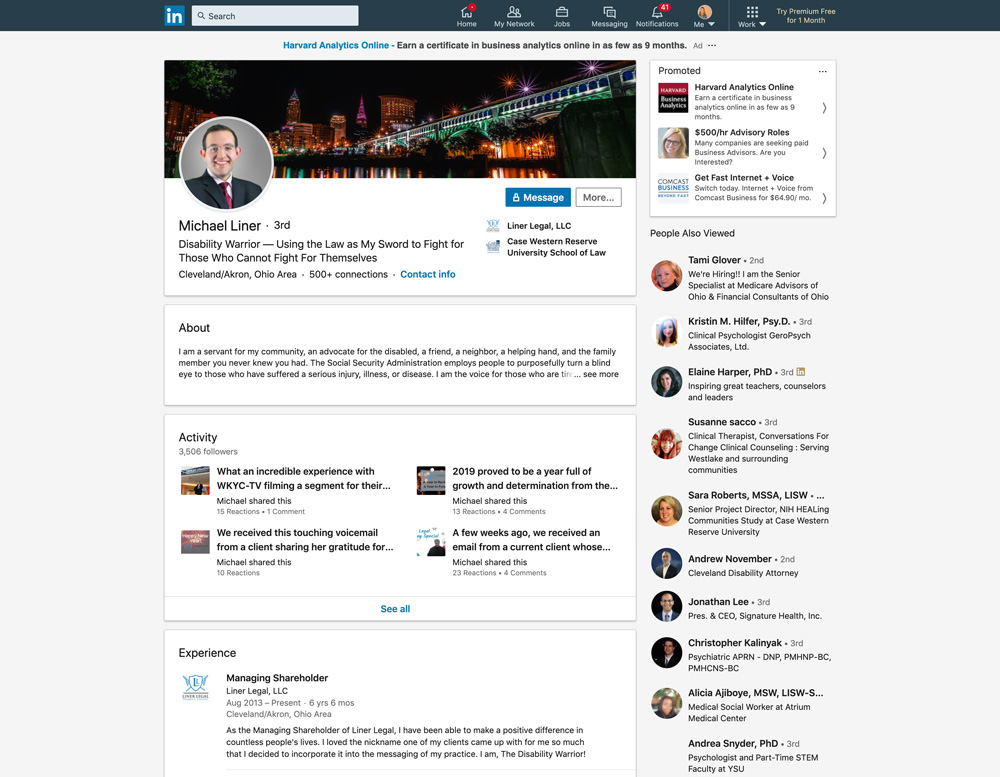
Most Fruitful Social Media Platform: LinkedIn
Liner has two people on his staff who spend much of their time on marketing. They managed that program, run the firm’s website, and maintain Liner Legal’s presence on Pinterest, Facebook, Twitter and YouTube. Liner personally handles the firm’s account on the social media platform that in his experience has been “most fruitful”: LinkedIn.
“I like it because it allows me to connect with other professionals who are in what I called allied professions,” Liner says. “I handle that instead of my staff because it’s fun for me and I’m in the best position to reach out to the other professionals and target who I want to work with in a professional sense,” namely those who deal with potential disability applicants.
“Obviously we spend a lot of time trying to increase our web traffic, but that gets us one new lead at a time,” Liner says. “What I really want to do is establish relationships in the community with people that can refer me a volume of new clients over time, after I have built their trust and have shown them that we go above and beyond for our clients.”
LinkedIn allows him to specifically target likely professionals such as social workers, doctors, therapists, counselors, attorneys in other fields. “Those are the allied professionals that I tend to reach out to as a disability attorney and I can easily find them on LinkedIn,” Liner says. “It’s a little more challenging to reach out to those people directly on Facebook or Twitter or Pinterest because they don’t always self-identify on those platforms.”
Early on, Liner ran an ad on LinkedIn targeting organizations that he believed would be his best potential referral partners. More recently he has been sending connection requests directly to individual members of those organizations. “That is not awkward because many of those people already know me” through his connections with the organizations they work for, he says. “They are people who have seen me give a presentation or conduct a training session, but I might not always necessarily be the top of mind with them,” he says. “After adding them on LinkedIn, I regularly post items of interest to them, and I monitor to see who likes and shares the different things I post.” Before long, he was getting likes and shares among a lot of secondary connections, further extending his reach.
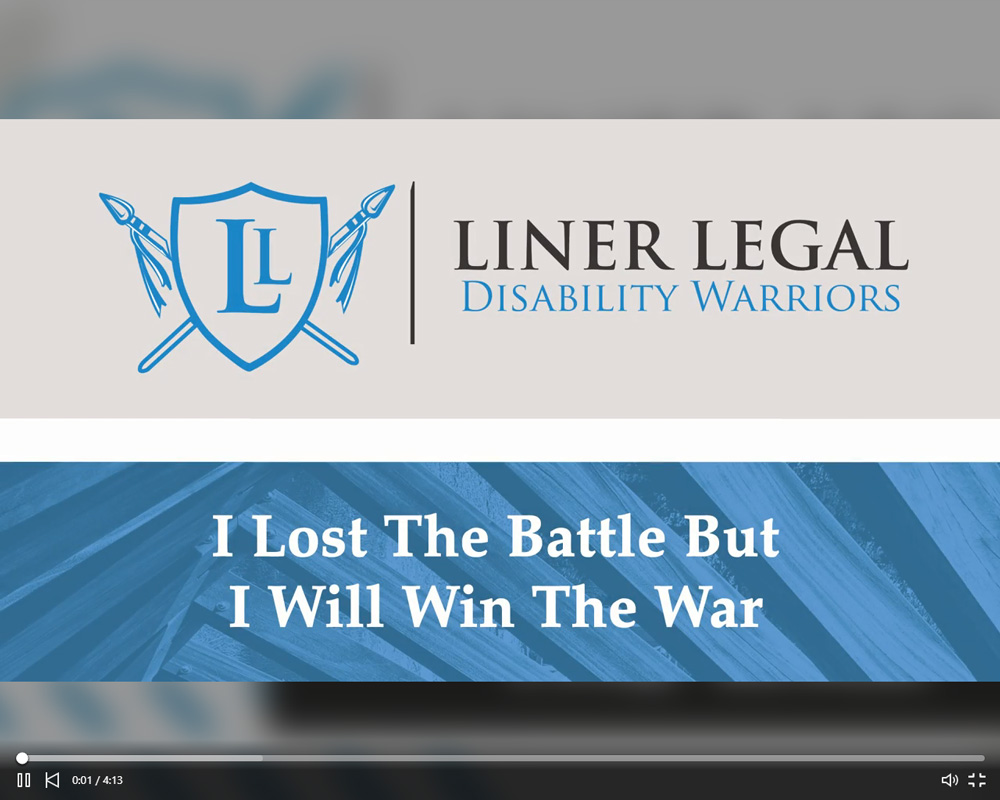
Education Marketing to Potential Referral Sources
His presence on LinkedIn has been “very helpful” at bringing him to the attention of groups that invite him to speak or run workshops, which is “a huge part of what we do,” says Liner. “My practice is built on what I call education marketing. I probably speak at three or four national conferences a year, and throughout northeastern Ohio we are putting on at least one or two training sessions or seminars a month,” some of which qualify the participants for legal or medical continuing education credits.
“I speak to mental health counselors, caseworkers, physical therapy offices, and a lot of people who work for the county governments,” he says. “We work a lot with other law firms that might see disability cases to educate their staffs about what to look for. We work with local health organizations, for example the local chapters of the Lupus Foundation and Multiple Sclerosis Society.
His pitch to those groups, he says, “has always been that I am sure that you are seeing people you have questions about disability. Give me half an hour or an hour of your time and I can help you be better able to answer their questions.
“I am not asking them to send me a bunch of clients, but naturally I then become the expert to that group and I end up getting referrals from them,” Liner says. “That’s kind of how I built my practice from the beginning. I didn’t always have a marketing team and a staff of case managers helping me build my cases. It was me going out and doing this by myself from the ground floor.”
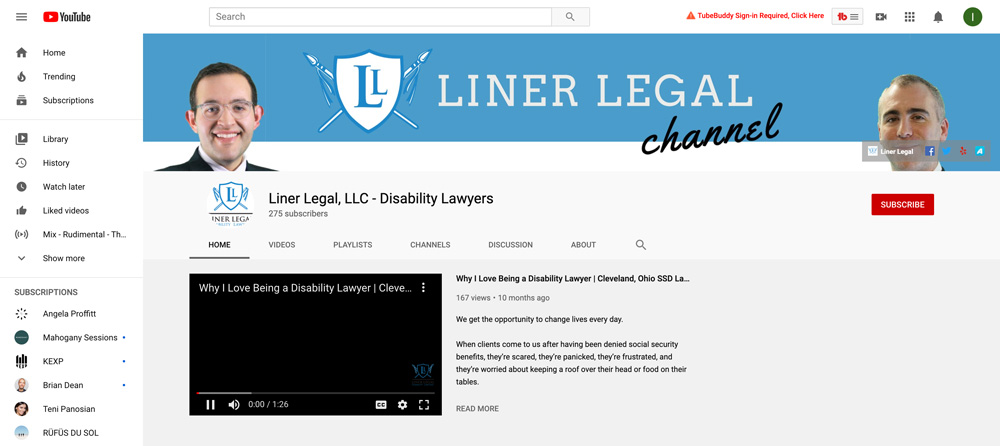
Some Video Views Better Than Others
Liner continually adds email addresses, including those from his LinkedIn contacts and those who attend his training sessions, to the list of recipients for his monthly email newsletter, which goes out to around 8,000 people.
He also regularly adds new tutorials to his YouTube channel, which contains dozens of videos. Many have gotten a couple dozen views at most, but a few have gotten over 10,000 views.
He isn’t impressed with and doesn’t chase big numbers. “It’s people from all over the country that are watching that video and if they’re in Hawaii, they are unlikely to pick up the phone and call a lawyer in Cleveland,” he says. “Videos on topics that are specific to Cleveland might get only 25 views but if they are 25 people looking for a lawyer in the area at that exact moment and I am able to answer their question, I may get 20 new clients from those 25 views. So I don’t really care as much how many views as I have. I care about answering as many questions as I can about my practice area.”
Many of those questions are from his existing clients and others he already knows. In fact, he recently posted a request on LinkedIn for ideas for upcoming instructional videos. They all go into the library of tutorials there to help his clients get through the process.

Accessibility Eases Clients’ Anxiety
On its website, Liner Legal offers home visits by a case manager for case intake, and promises to any questions will get answered within a day. Linder says he is willing to accept the risk that too much openness will encourage incessant calls from overly needy clients. “I’m being paid to hold somebody’s hand,” he says, though he adds, “What we try to do is set expectations very early on as to when and how often they’re going to hear from us, and when they should be contacting us.
“By doing that and by explaining the process right at the beginning, we bring their anxiety down. I think that’s one thing we’ve been able to do by being so accessible, with the forms and all the information we’ve provided on our website and through our app. We made it so that we can answer their questions and give them help at all times and it doesn’t have to bog our phones down”.


